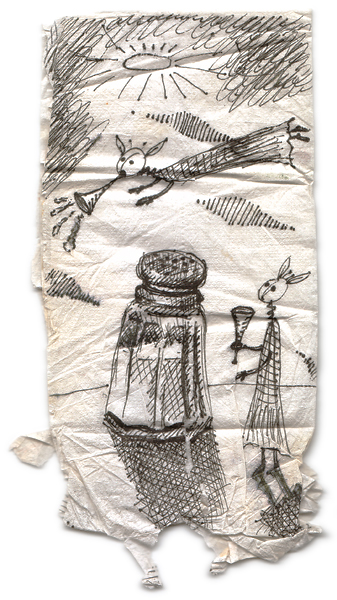
Drawing is one of the few things I have done consistently my entire life. I’ve used it to give directions, to convey an idea, to simplify a problem, to figure out how things are structured, to illustrate what I see, and to create art. Regardless of the quality or purpose of each drawing, it just happens – like speech or walking. It’s not meant to be evaluated. It’s meant to be offered and received, like language.
Over the years, I’ve learned so many unexpected things about drawing. For example, I learned that drawing discloses more reality than photography. Drawing distills and concentrates the truth, presenting it with confidence and assertion. A testament to this truth is that drawing (whether in digital or analog form) is still trusted as a legitimate means of informing and teaching medical professionals, despite the availability of photography. We entrust drawing with so much responsibility that our lives literally depend on it. Like an uncanny materialization of Plato’s Theory of Forms, drawing relays human perception. In contrast, photography is a great tool for fabrication and trickery – it lies quite skillfully. Drawing from photographs? (Truth about deception?) That’s an interesting conundrum.
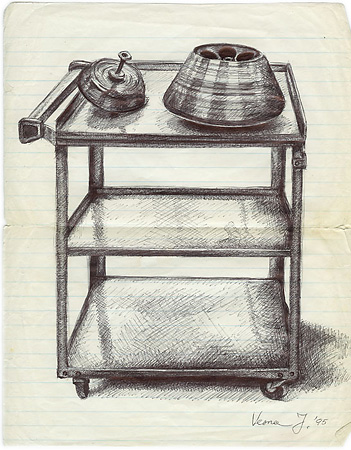
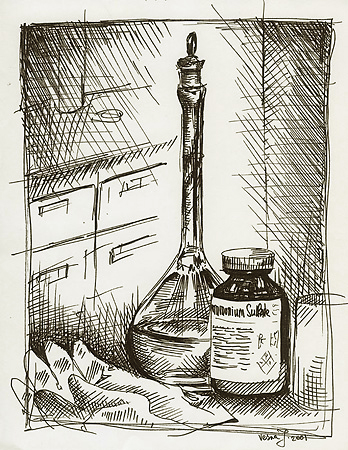
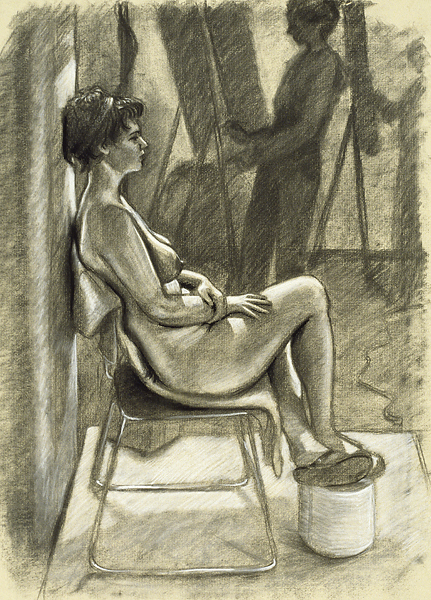
When I took an alternative drawing class at the School of the Art Institute of Chicago, I remember a moment in which the whole class curiously stared at a piece created by one of the students. We were trying to figure out why his drawing felt upside-down even though the subject matter was right-side-up. To that, the professor Barbara Rossi simply said: “Drawings don’t lie.” As it turns out, the student had drawn the object upside down and then flipped the paper. His marks and gestures somehow revealed the positioning of the paper during the act of drawing. Drawings cannot evade our capability to process the subtlest nuances in line, texture and color. Drawings can only tell the truth.
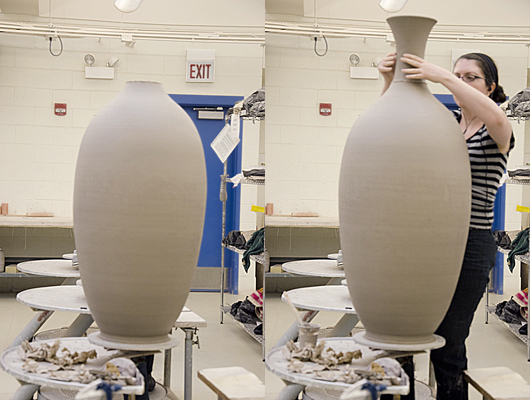
The same trait that leads to honesty in drawing also results in a profound familiarity and haunting intimacy with the subject matter. I have experienced this on several occasions, even consciously putting it to good use at least once – when I unsuccessfully attempted the top section of a large ceramic vessel. I was trying to create this section separately on a potter’s wheel in order to attach it to the large unfinished form, but I couldn’t quite achieve the correct curvature of shoulder. The fluted neck mismatched the body. I spent many hours working on one mistake after another until I finally turned to drawing. I left the potter’s wheel and sat down to draw the unfinished vessel from observation, continuing into an imaginary contour of the missing neck. After this, I sat back at the potter’s wheel, grabbed some clay, and in just one effortless try I threw the top section perfectly. Did my arm absorb the curved line through some sort of motor memory? How did the act of drawing change my experience of the existing form? The cliché goes that “drawing is about seeing.” But does that also work in reverse? Does drawing elicit a deep-rooted familiarity with a form before it can be seen – before it actually exists?
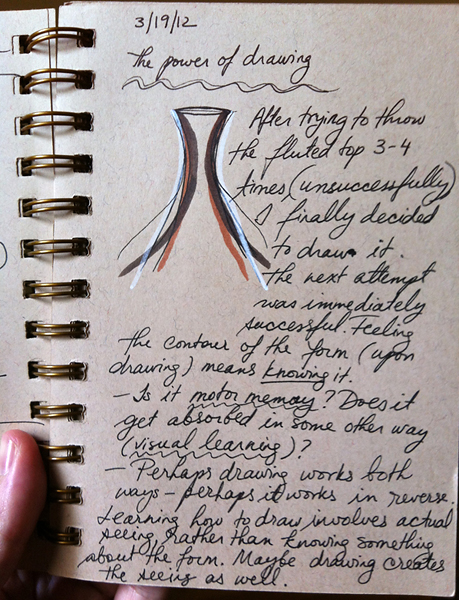
The intimacy that I sometimes experience in the act of drawing from observation can be downright uncomfortable. This is why I often choose subjects that captivate me and that I am generally interested in learning more about, like this jade plant (pictured below), jellyfish at the aquarium, creatures in the desert, and various other life forms. Drawing these things brings me closer to their enigmatic structure and verve. It is a nearly mystical experience.
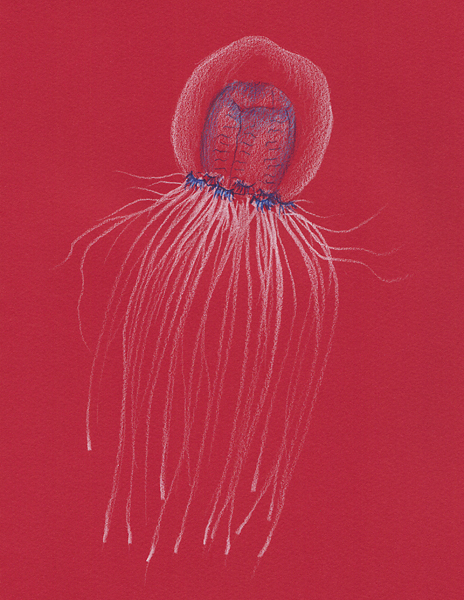
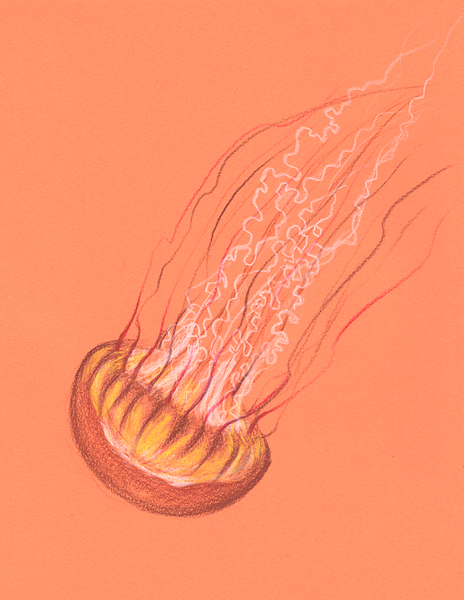
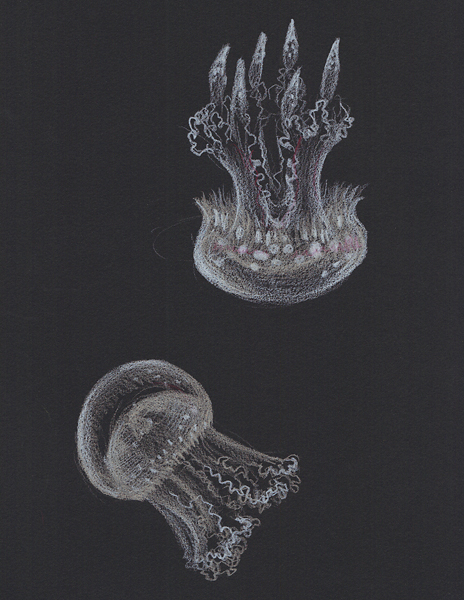
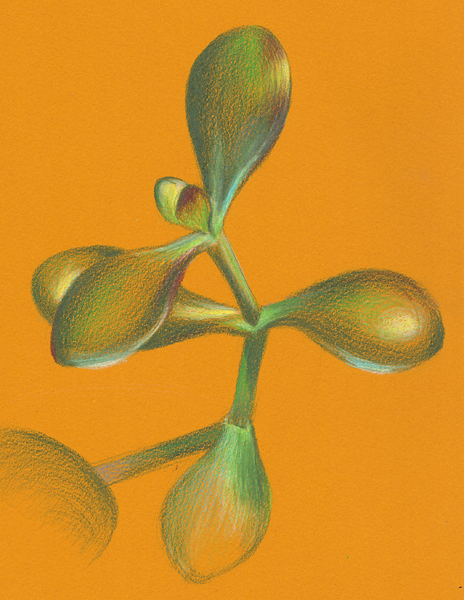
During my recent residencies in upstate New York, I spent a couple of weeks in the field, quietly drawing one wild plant after another. This act had unexpected consequences, ultimately prompting me to write this blog entry. My wild plant drawings were intended as rewards for a Kickstarter campaign that partially funded my summer residencies. I had promised about 15 of them to contributors, and began working on them in the last week of my June residency in Troy, NY – mostly during mountain hikes. Once the CAC Woodside residency ended, I arrived at my July residency, ChaNorth, and decided that I would spend the entire first week completing these sketches and mailing them out. Unlike the enigmatic town chapel setting of the first residency, ChaNorth is located out in the country near a farm, with plenty of wildlife right outside my door. I sat on a blanket and continued my drawings, carefully observing each leaf, bur, stem, and berry without picking them. It turns out that many of the plants were well-known weeds and wild shrubs: sumac, St. John’s wort, dandelion, clover, etc.
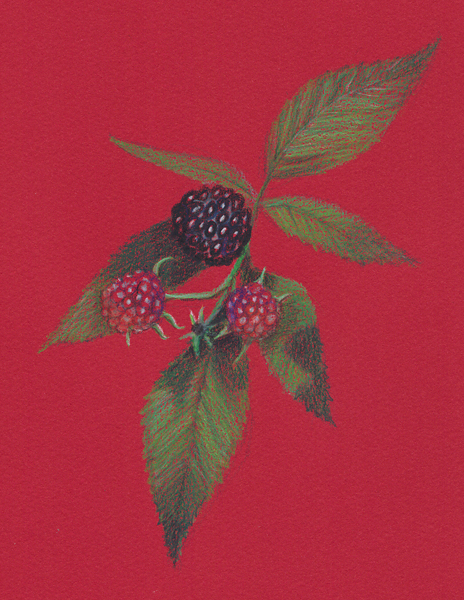
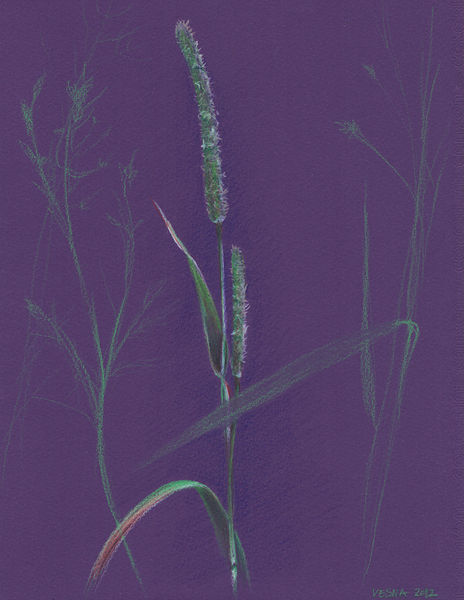
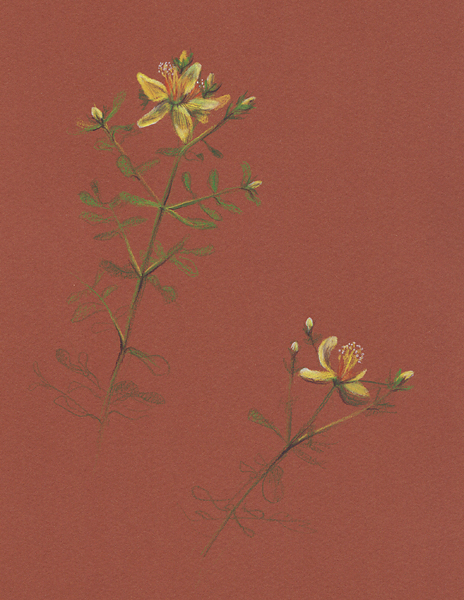
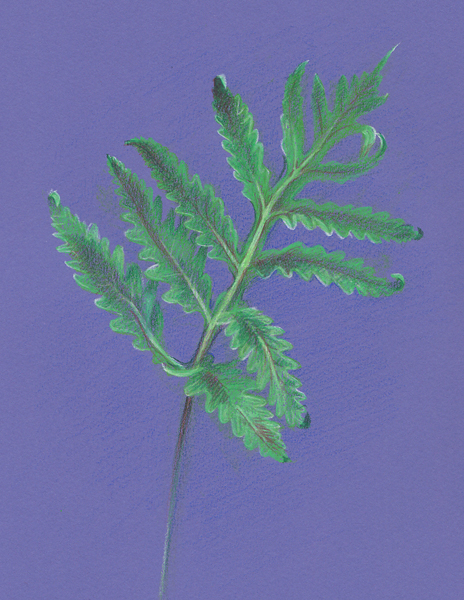
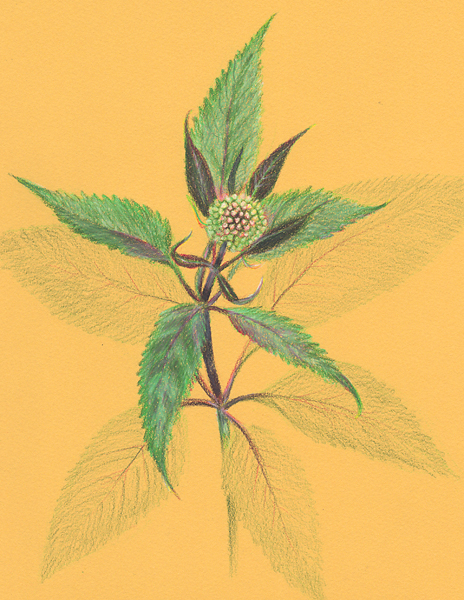
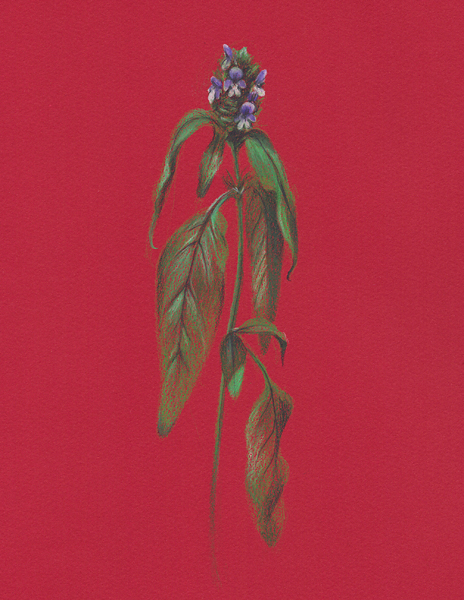
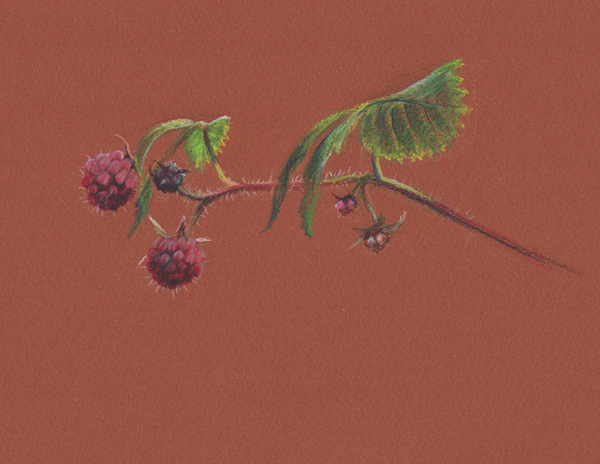
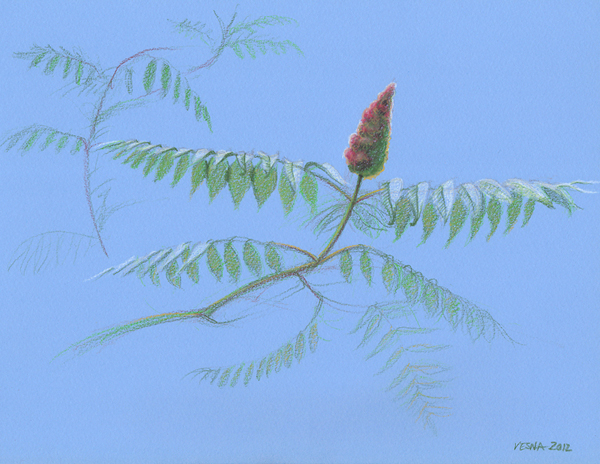
Learning how each form is curved and textured, trying to convey translucent or furry leaves, and tackling the continually shifting lighting proved to be challenging endeavors. Drawing brought me closer to these plants. I began to observe where they flourished, how insects interacted with them, and how rapidly they changed as they experienced rain or direct sunlight. As for the drawings, I discovered a correlation between the time I spent and how much they pleased me; the less time, the better! Although this may not be too surprising (spontaneity is known to generate great results), I was most shocked by the consistency and sheer oblivion with which this happened. After finishing several drawings, I realized that all of the 20-minute ones were decidedly my favorite, so I began setting a timer. It forced me to try and relay the spirit of the plants in fewer gestures instead of accurately depicting each leaf. In the meantime, I also asked my colleagues to tell me which drawings they liked most, and they didn’t always choose the quick ones. This made me wonder even more about the reasons for my personal preference: was it the quality of the gestures, the ambiguous areas of incomplete detail, or the attention to character rather than visual appearance that drew me to the quicker ones? Maybe it was a combination of these characteristics.
The ChaNorth residency had a farming component. Once a week for a few hours, all six artists would carpool to McEnroe organic farm to participate in agriculture in exchange for fresh produce all week. Our first farming trip took place a week into our residency, only a day or two after I finished my plant sketches. We arrived at the farm, and our first assignment was to weed the onion and garlic beds. I got down on my knees and froze in shock: the plants that I was expected to hastily rip out of the ground and destroy were the same species I spent two weeks carefully observing and getting close to.
This bewildering experience marked the beginning of my creative interests at ChaNorth. Unlike my focus on architecture at CAC Woodside, I became interested in interspecific interactions and biocultural evolution. I (finally!) began reading The Wild Life of Our Bodies by Rob Dunn, and I began thinking about the next step in my Pareidolia series: images of crops, weeds, and human organs combined.
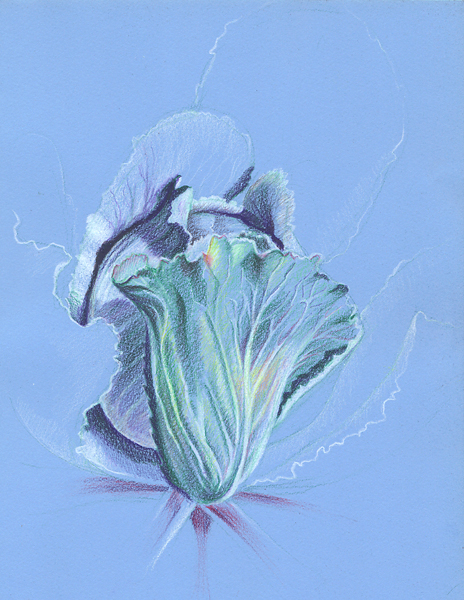
I really like this post and have to ask myself why I have (almost) never drawn in my 63 years.
– It costs nothing
– You do not have to ask anyone for permission
– It is possible at any time
– It is contemplative
I often look at books on drawing techniques, like “Drawing in 5 Minutes”.
After the first few attempts, I usually give up because I think I just can’t do it and never will.
It’s probably some old mindset in me that blocks me completely.
I love your recognition and articulation of the reality of drawing vs. photographs. As a ceramic sculptor, I’ve also noticed that figures (and objects) that are sculpted from a live model seem real vs. the “deadness” of figures resulting from a mold of a person. Also enjoyed considering Plato’s Theory of Forms. This fits with my experience. Also, in drawing (which I tend to resist) an idea, it is so much more real than the writing of it.
Also appreciate the progression of your work, which led you to have to wrestle with treating certain plants which you imbued with beauty and life in the drawing of them as weeds you were supposed to destroy.
Perhaps I will allow myself to do much more spontaneous drawing having been enlightened by your description of how strongly it can work to get at the truth of something.
I’m glad to have discovered your writing and your art. Thanks.